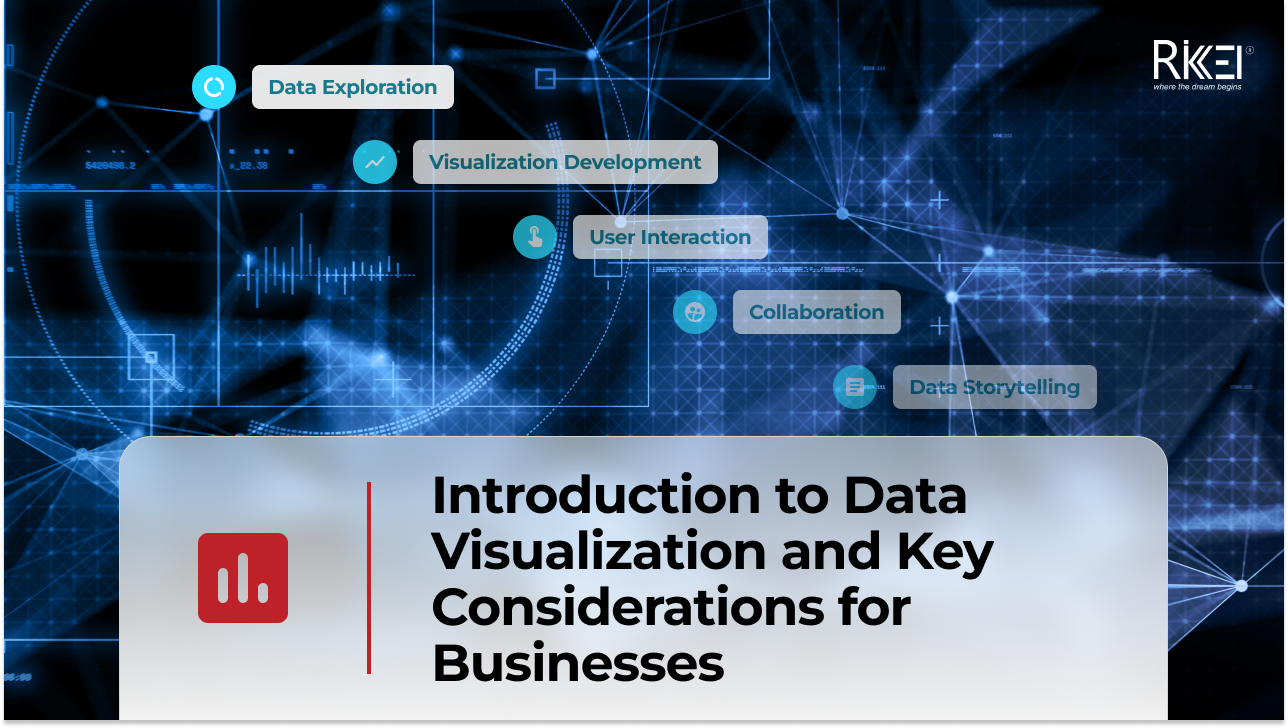Data-Driven Product Development: Strategy To Drive More Sales
Contents
As a business owner, you want your products or services to be well-received upon launch. The most effective way to create a product that satisfies a broad range of customers is to gain insights into their needs and behaviors from the outset. The key lies in data-driven product development, a strategy that many companies have embraced and from which they’ve derived significant benefits. Scroll down to learn more about this approach!
What Is Data-Driven Product Development?
Data-driven product development is an approach that harnesses customer data to guide decisions in product development. Product managers utilize these validated insights and learnings to generate ideas, create prototypes, and implement real-time adjustments. The data manifests in various forms, encompassing market trends, customer behavior and needs, and product usage.
According to a 2022 report of NewVantage Partners, 92.1% of businesses are receiving returns on their AI and data investments. These achievements can be attributed to data-driven strategies, which enable companies to identify opportunities for improvement and create products that resonate with customers. In a data-led organization, cognitive biases and guesswork have no place.
How Data Helps With Product Development?
Determining Patterns And Trends
Analyzing real-time data provides insights into current market trends and customer patterns, which are essential for customer-centric product development. Understanding what customers appreciate or dislike allows you to adapt your products accordingly. This not only attracts more buyers and boosts revenue but also enhances customer satisfaction and loyalty.
Furthermore, data guides product managers to identify key opportunities, address bottlenecks efficiently, and streamline the product development process by freeing up time from unnecessary tasks. Businesses can leverage analytics tools, such as machine learning platforms or other statistical methods, to expedite this process, enabling faster product launches.
Understanding Customer Behavior
Data sheds light on customers’ buying journey, revealing insights into their purchasing habits, interactions with your product, and preferences. Armed with this knowledge, product managers can make informed adjustments to the product’s design, prioritize features, and enhance the overall customer experience. Additionally, leveraging these insights allows your business to launch new features or products that address customers’ unsatisfied needs, differentiating you from competitors.
For example, if your website is currently experiencing an increased bounce rate, the culprit may not necessarily be the content. Instead, utilize website analytics tools to track visitors’ behavior and identify the specific elements causing them to exit your site. It could be issues with the layout, web design, or a complex signup process. Pinpointing these pain points enables you to make effective improvements.
Product managers can gather data from diverse sources, including market research, focus groups, user observations, customer interviews, open-ended surveys, and usability testing. It’s advisable to consider data as an ongoing component of the product development process, continuously monitoring and updating the datasets.
Roadmapping
A roadmap encompasses all the product details, including features, functionality, and release dates, necessitating thorough data analysis. It should span the entire buyer’s journey, from attracting and converting them into paid customers to retaining them. This data-driven roadmap ensures everyone is on the same page, providing a comprehensive view of the product development process.
The Challenge Of Data-Driven Product Development
There are existing difficulties that may impede data-driven product development, including:
- Data quality: Collecting outdated, inconsistent, or irrelevant data can lead to a misunderstanding of customer behavior and incorrect decision-making, resulting in a waste of both time and money.
- Data analysis: Product managers lacking a technical background may struggle to effectively analyze data and extract useful insights. Additionally, a large volume of data can overwhelm analysts, causing delays in the product development process, and businesses may miss valuable opportunities.
- Data interpretation: Extracting incorrect insights from collected data can result in products that do not meet customers’ needs, leading to decreased customer satisfaction and lower sales.
How To Establish A Data-Driven Product Development Culture In The Organization
1. Listing Your Product Assumptions
Establishing a data-driven product development framework is a long-term endeavor, presenting challenges in its initial stages. When you launch your product for the first time, there may be limited usage data available, making it imperative to list assumptions. The next step involves identifying data points for each stage in the buyer’s journey.
As you drive more sales, the collection of additional data through user feedback and discovery interviews becomes crucial, either proving or disproving the initial assumptions.
2. Querying The Listed Data Points Using APIs
With data points representing various stages in the conversion funnel, it’s time to question them to gain insights. This step is crucial for pinpointing gaps in the data and assessing whether these data points can validate your product assumptions. Manual querying is essential for identifying which areas require attention, as data points in the buying journey constantly change.
Fortunately, APIs can significantly expedite this querying process for you. A single API call can encompass data modeling and multiple queries, streamlining your data analysis efforts.
3. Sharing The Data With Your Team
In a data-driven product development culture, it’s crucial for all team members to have access to and understanding of product usage data. Firstly, clear communication within your team is essential to designate which stakeholders will utilize specific types of data. Encourage proactive inquiries about the data they need. For instance, marketing staff may find data related to customer behavior on a landing page valuable, while a salesperson may prioritize information on conversion rates.
To ensure that everyone can access and consume data easily without compromising security, it’s best to integrate your APIs into dashboards. Dashboards not only visualize data but also facilitate data interpretation and allow for real-time updates.
4 Best Practices For Data-Driven Product Development
Conducting Research
Market research is an essential aspect of developing new products. Grasping the current trends and market landscape enables product managers to generate better ideas. Going the extra mile to gain insights into each customer persona and tailor the product accordingly is crucial. Initially, it’s vital to experiment with different ideas before honing in on the perfect one and creating prototypes.
Breaking Down Data And Making It Accessible
We can’t stress enough that all stakeholders should be able to access the data sets they need. The most effective approach to simplify data access and consumption is to break it down into digestible chunks. As mentioned, creating a dashboard for users at all levels is a wise choice, facilitating accessibility without compromising security.
Separating Correlation And Causation
When extracting insights from collected data, some product managers might mistakenly confuse correlation with causation. While correlation indicates the association between two variables, causation implies that a change in one variable may lead to a change in the other. It’s essential to note that the two can coexist, but correlation does not necessarily mean causation.
For example, the launch of Feature X and an increase in sales may show a correlation, but it doesn’t necessarily imply causation. This underscores the importance for managers to formulate a hypothesis and conduct testing to determine whether Feature X genuinely leads to an uptick in sales, thereby fostering the development of that feature.
Creating An AI Flywheel
AI and data should go hand-in-hand to optimize the product development process. An AI flywheel runs on unstructured and structured data (both from external and internal sources) with the help of machine learning algorithms. This flywheel, combined with efficient data governance and an operating model, informs PMs to make decisions on when to reuse data and when to incorporate data from unexpected sources.
Case Studies
Netflix
When it comes to data-driven product development, Netflix stands out as a pioneer. The company leverages data, like usage patterns and customer behavior, to assess what content is the most appealing and determine the most effective way to deliver it to the audience.
For example, the streaming giant observed that fans of House of Cards tend to search for and watch films that were directed by David Fincher and starring Kevin Spacey. This insight led them to spend $100 million buying two seasons of the series, a strategic move aimed at attracting more subscribers.
Amazon
Another noteworthy example is Amazon, which harnesses data to make product recommendations based on customer preferences. Through data analysis, the company can optimize inventory management, ensuring the right products are consistently in stock at the right time and locations for buyers.
Additionally, their competitive pricing stems from extensive research on competitors’ prices and understanding customers’ demands, creating an impression for buyers that they can always find the best deals on Amazon.
Airbnb
Personalization is at the core of Airbnb’s product development strategy. The company gathers data on local events, seasonal demand, property type, location, and more to recommend the most cost-effective and convenient options to users. These data-driven decisions have not only boosted the booking rate but also increased their revenue.
Conclusion
Embracing the data-driven product development approach promises profitable returns for your company. Leveraging data effectively results in products that satisfy most customers’ demands, thereby boosting your sales. That said, it should not be treated as a short-term strategy but rather as a long-standing culture within your business.
More From Blog

April 4, 2024
Big Data Performance: Maximize Your Business Value
In today’s data-driven world, organizations are constantly generating and collecting immense amounts of data to understand their customers more deeply. This data, often referred to as “big data,” holds immense potential for organizations to seek opportunities and overcome challenges. But accessing and analyzing big data isn’t enough to have proper strategies; organizations must pay attention to […]

April 4, 2024
How Real-Time Data Analysis Empowers Your Business
In today’s fast-paced business landscape, the ability to quickly make data-driven decisions has become a key differentiator for success. Real-time data analysis, the process of analyzing data as soon as it’s generated, has emerged as a powerful tool to empower business across industries. By leveraging real-time data analysis, organizations can gain timely and actionable insights, […]

April 4, 2024
Differences Between Data Science and Computer Science
Data Science and Computer Science are distinct fields overlapping in certain areas but have different focuses and objectives. The article below will help you clearly understand the differences and the close connection between the two fields. What is Data Science? Data Science is an interdisciplinary field that combines scientific methods, processes, algorithms, and systems to […]

March 28, 2024
Introduction to Data Visualization and Key Considerations for Businesses
In your opinion, what is data visualization? Your main goal is to communicate your recommendations engagingly and effectively, right? To achieve this, let’s immediately explore a method that can represent information with images. What is Data Visualization? Define data visualization and their roles in organizations First, you need to find the answer to the question: […]

March 21, 2024
How to Build an Effective Big Data Analytics Tool for Your Business
Building an analytics tool for a business brings several significant benefits, especially in today’s business environment where data is becoming larger and more complex. So how to build an effective analysis tool for businesses, follow the article below! Assessing Business Needs Assessing business needs involves understanding the requirements, goals, and challenges of a business or […]

March 14, 2024
What Is Oracle Business Intelligence? Their Role in Today’s Enterprises
Oracle Business Intelligence (BI) refers to a suite of tools, technologies, and applications designed to help organizations collect, analyze and present business data. The primary goal of Oracle BI is to provide actionable insights to support decision-making within an organization. Oracle BI encompasses a range of products that enable users to gather, process and visualize […]

